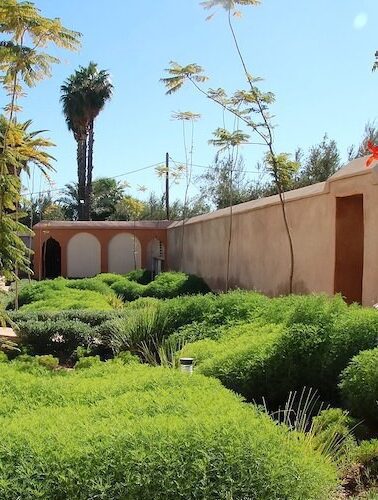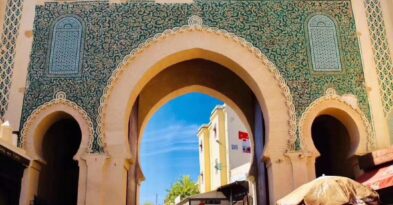Gardens in Morocco
In Morocco, garden art carries profound spiritual significance. As depicted in the Quran’s paradise, these oasis-like courtyards manifest eternity on earth—murmuring streams correspond to rivers of milk in the celestial garden, symmetrical flower beds align with the geometric order of the four heavens, and the shade of fruit trees provides tranquil spaces for mortals to commune with divinity.
Marrakech, situated at the desert’s edge meeting agricultural lands, brings Moorish garden aesthetics to perfection: cedarwood-carved colonnades surround central reflecting pools mirroring citrus tree silhouettes; clay water clocks and fountains form hydraulic systems that create timeless meditation spaces through soundscapes. When scents of roses and jasmine drift through arcades, when Quranic inscriptions on zellij tiles interplay with koi carp in water, this three-dimensional poem composed of water, wood, and stone becomes an interface connecting the secular and the sacred.
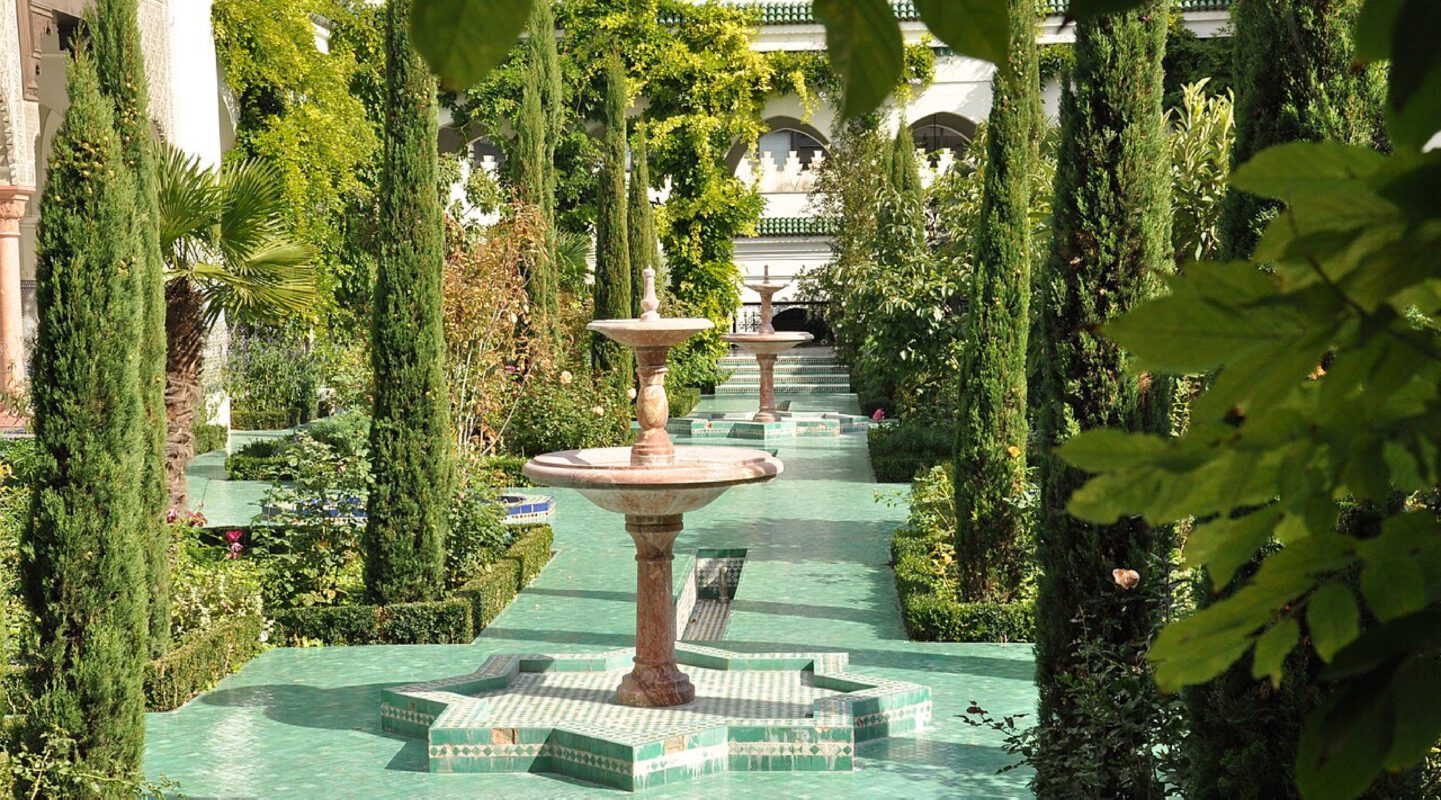
Marrakech
In Marrakech and the northern slopes of the Atlas Mountains, numerous diverse yet invariably magnificent gardens are scattered across the landscape, many offering free public access. Just a short walk from the bustling Djemaa el-Fna square, you can step into parallel worlds built with water channels, shade, and floral scents—the cobalt-blue structures of Jardin Majorelle emerge like alien wonders among cactus groves, pomegranate arches in the Saadian Dynasty’s secret gardens hang with century-old vines, and olive groves in the Menara Garden reflect in ancient reservoirs, composing eternal tableaus with distant snow-capped mountains. These gardens are not merely escapes but open-air museums of Morocco’s millennium-old horticultural art, where every falling orange petal whispers the aesthetic codes of different dynasties.
● Gardens of Agdal
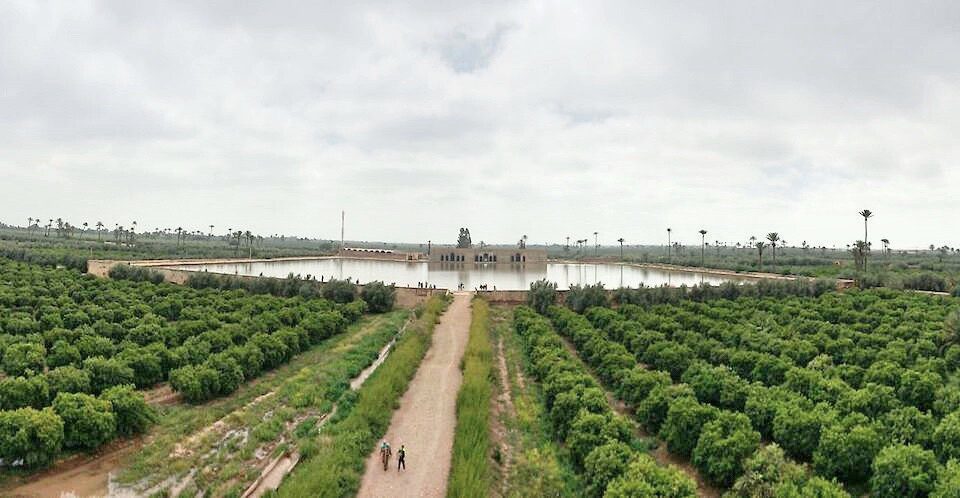
Behind the Royal Palace of Marrakech stretch the enchanting Agdal Gardens, spanning 4 kilometers in length and 1.5 kilometers in width. The name “Agdal” originates from ancient Berber language, translating to “Meadow Behind the Wall,” perfectly capturing this hidden realm concealed behind towering walls.
Established in 1157, these gardens rank among the planet’s oldest living horticultural heritage, personally commissioned by Almohad Sultan Abd al-Mu’min. Their irrigation system represents a medieval engineering marvel—through an intricate network of underground reservoirs, meltwater from the Atlas Mountains flows through copper pipes to nourish centuries-old olive groves and pomegranate orchards. The rammed earth walls enclosing the gardens have weathered six hundred years, with palm prints of original artisans still visible in weathered sections.
Today this royal garden remains monarchical property, opening only on Fridays and Sundays for limited hours. As you sit beneath ancient cedar trees watching sunlight dance on ancient water channels through olive leaves, you might hear the garden’s whispers across eight centuries—a harmony of flowing water and history, an eternal covenant between power and nature.
● Majorelle Garden
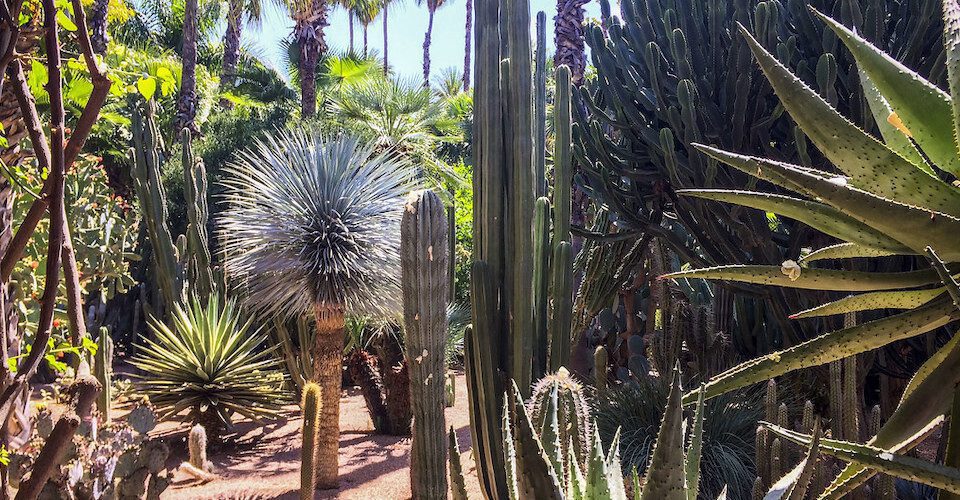
The Jardin Majorelle materializes like architectural poetry, annually drawing countless travelers into its chromatic labyrinth. The villa saturated in “Majorelle Blue”—a cobalt pigment derived from desert plants—stands like an extraterrestrial fragment fallen to earth amidst Marrakech’s terracotta-walled buildings. This radical contrast is intentional: French artist Jacques Majorelle, who moved to Morocco in 1919 to convalesce from tuberculosis, deliberately created this visual healing space with a blue that transcends nature.
This “North African Monet” devoted his life to plant hunting: North American saguaro cacti became bronze sculptures under his gaze, Asian lotuses bloomed in anomalous colors under Moroccan sun, South African bird-of-paradise flowers conversed with native olive trees through morphological dialogue. After the artist’s death in 1962, the abandoned garden was rescued in 1980 by Yves Saint Laurent and Pierre Bergé. They not only restored 194 rare plant species but converted the studio into a Berber Museum—allowing art and nature to be reborn from the ruins of colonial aesthetics.
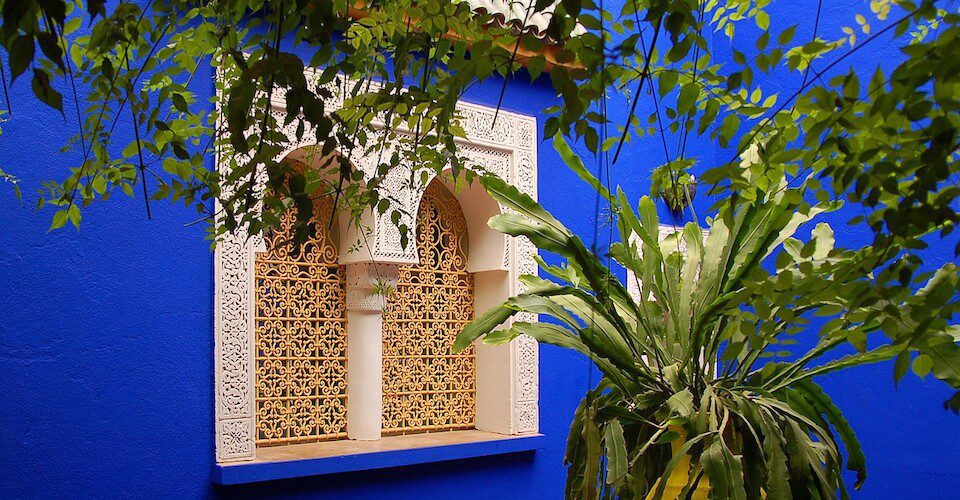
Today visitors entering through bamboo-shaded paths during 40°C heat instantly descend into a cool sanctuary: macaws call from palm canopies, fountains refract rainbows at the end of azure corridors, the cactus garden unfolds like a surrealist theater. This garden has long transcended ordinary tourism to become a living allegory where colonial history, artistic innovation, and ecological preservation intertwine.
● Menara Gardens
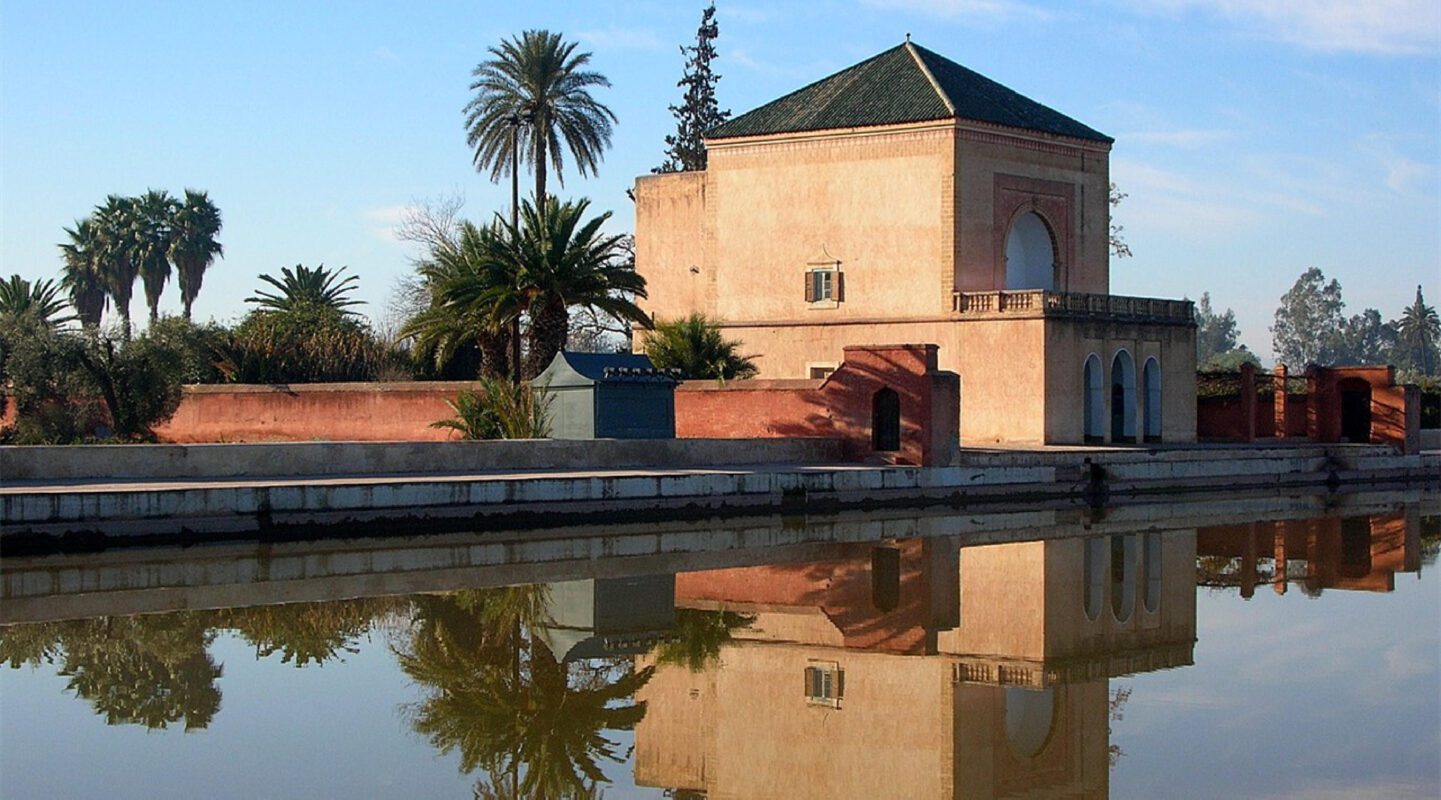
Nestled on the western edge of Marrakech at the foot of the Atlas Mountains, the Menara Gardens emerge like an emerald inlaid at the desert’s fringe. These hundred-hectare gardens blanket olive orchards, their iconic artificial lake fed by ancient qanat systems channeling mountain meltwater. At its heart stands a green-roofed pavilion from the 19th century—when visitors ascend its terrace, they behold a triple-layered panorama: the garden’s central axis, the Koutoubia Mosque minaret, and snow-capped mountain peaks.
Two parallel legends echo through these grounds:
The Love Myth: Founder Sultan Abd al-Mu’min once hosted a legendary beauty here; at dawn she vanished into the shimmering waters, leaving eternal footprints on the lake’s stone steps
The Treasure Secret: The Almohad dynasty sealed treasures from conquered lands in underground labyrinths, with each olive tree’s spacing actually encoding a treasure map
Local families often picnic here on Friday afternoons with mint tea and semolina cakes. As sunset gilds the pavilion and olive groves whisper in the breeze, this garden bearing both legends and daily life becomes a hall of magic mirrors connecting Morocco’s history with its living present.
Ourika Valley
● Aromatic gardens
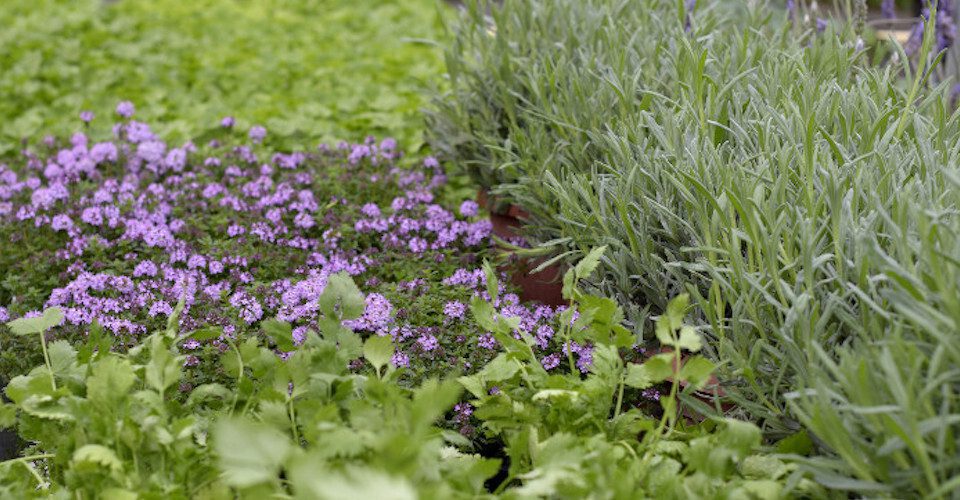
Medicinal herbs and spices remain central to Moroccans’ healthcare system, now experiencing renewed vitality in the emerging spa industry. Generations of herbalists still follow lunar cycles to harvest wild rue and argan leaves at 3,000-meter altitudes in the Atlas Mountains, supplying Marrakech’s legendary spice markets. Meanwhile, just kilometers from the ancient city in the Ourika Valley, a “botanical revolution” is unfolding—the Nectarome ecological gardens employ precise zoning to cultivate medicinal sage alongside Damask roses on terraced slopes, where each drop of essential oil encapsulates snow-capped peaks, sunlight, and millennia of Berber wisdom.
These living medicinal gardens serve not only as resource centers but also as frontiers of experiential travel:
Visitors can participate in dew-fresh morning harvests, learning to distinguish subtle variations among 32 mint species
Operate traditional copper stills to extract rose hydrosol in heritage distillation workshops
Formulate personalized healing herb sachets under guidance from Berber healers
Where modern technology meets ancient wisdom at the foot of snow-capped mountains, these fragrant plants are composing new chapters in Morocco’s health philosophy.
Rabat
● The Andalusian Garden
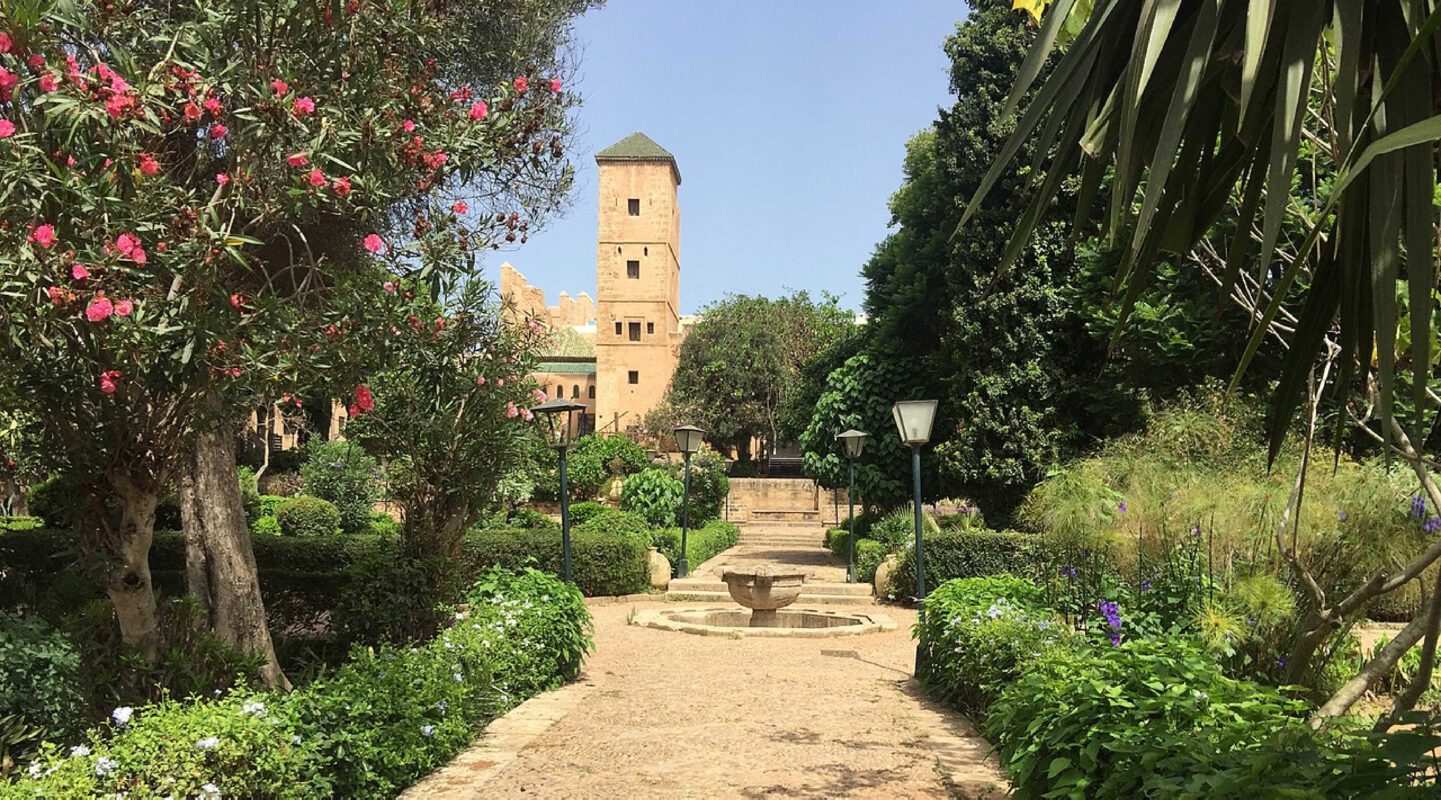
Behind the towering ocher walls draped with cascading bougainvillea lies a veritable oasis of vibrant life. This unique botanical sanctuary hosts a Maghreb-exclusive collection of flora: date palms and cypresses sketch the skyline, orange and lemon trees exchange fragrances on the breeze, while bay laurels and jasmine create aromatic tapestries alongside rare specimens like the multi-hued Iris tingitana and desert roses found only in this region. Rabat’s Mediterranean climate acts as a master perfumer, allowing plants from diverse latitudes to thrive in harmonious coexistence.
The garden’s terraced design cascades toward the riverbank, originally established as an experimental ground for Morocco’s National Agronomic Research Institute. Today it serves as a living bridge between academia and daily life—where researchers still monitor Mediterranean lavender adaptations in secluded corners, local mothers teach children to identify medicinal herbs on sun-drenched benches, and visitors seek reflections of the Quranic paradise beneath ancient olive trees.
Though created in the 20th century, the garden exudes an aura of ancient heritage through deliberately weathered colonnades, moss-covered fountains, and time-stained stone steps. Recognized by UNESCO as one of the world’s most valuable botanical gardens, its ecosystem thrives with remarkable biodiversity: storks nest in cypress crowns, stray cats patrol rosemary hedges, and lizards sunbathe on low walls. When the city’s cacophony is filtered by these venerable walls, only nature’s symphony remains—the murmur of water, bird calls, and rustling leaves transform this space into a spiritual sanctuary where modern souls reconnect with eternity.
● Exotic gardens in Rabat
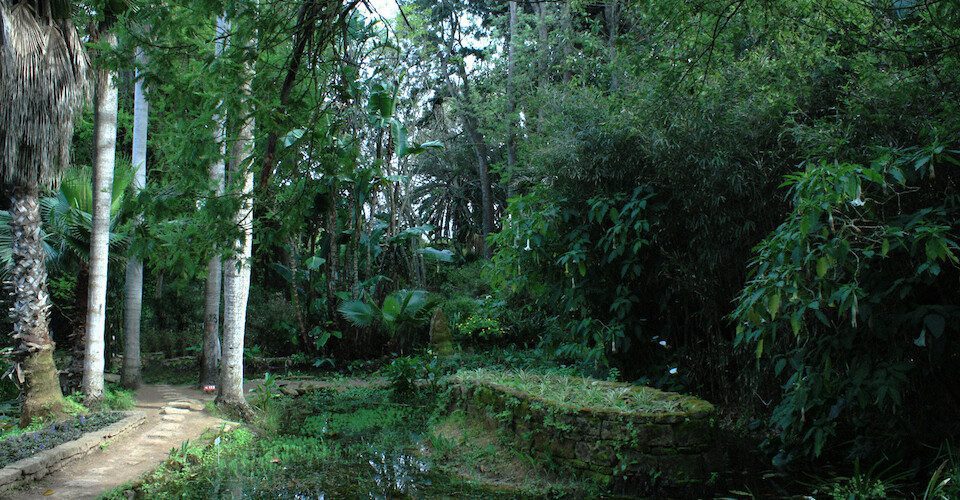
n 1951, French horticultural engineer Marcel François acquired four and a half hectares of land in Bouknadel, embarking on creating a transcontinental botanical utopia. After a decade of meticulous cultivation, this miraculous garden finally opened to the public—a living collection featuring Chinese camellias, South Asian bodhi trees, Congolese ferns, Japanese maples, Brazilian rainforest specimens, and Polynesian coconut groves.
Every turn in the garden brings visual revolution:
Bamboo tunnels transport visitors to Eastern Zen realms
Giant cactus zones construct surreal desert landscapes
Waterfall systems recreate micro-ecosystems of the Congo River Basin
François shaped flora with a sculptor’s touch: cypresses trimmed into geometric forms echo Constructivist aesthetics, while moss-covered stone statues emerge like Easter Island moai through the mist. More than merely displaying exotic plants, the garden employs “ecological theater” storytelling techniques, transforming every leaf into an ambassador for cross-cultural dialogue. When sunset filters through plantain leaves, casting dappled shadows on cobblestone paths, this botanical ark becomes a green embassy connecting six continents.
● Nouzhat Hassan Garden
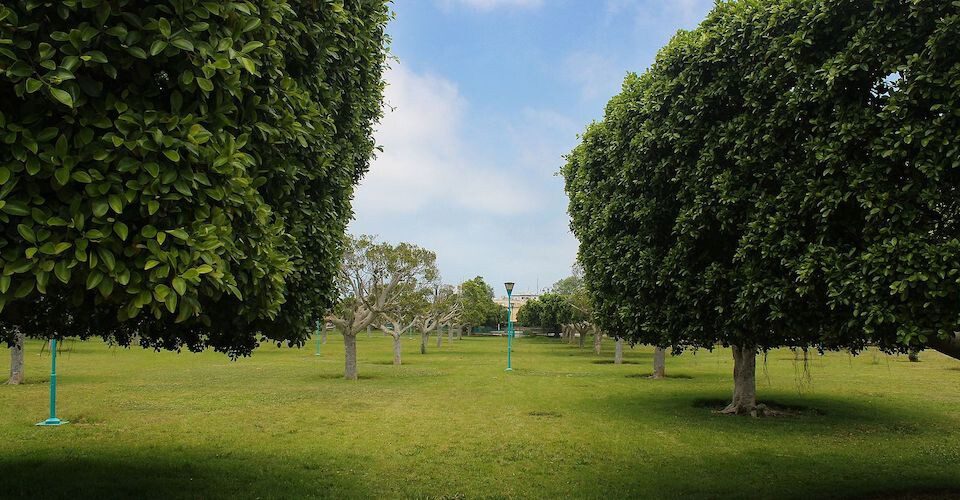
Nestled between the ancient Medina and the modern city, this garden has served as a nurturing embrace for generations. When the sun reaches its zenith, it transforms into a cool refuge: families stroll through the century-old pine tunnel, lovers play hide-and-seek in boxwood mazes trimmed in 1930s retro styles, and solitary elders listen to fountain whispers on iconic wrought-iron benches.
The garden’s most enchanting features are its timeless aesthetic details:
Art Deco pavilions preserve their original appearance from the Moroccan modernist movement
Colorful mosaic fountains still play water symphonies dating to the 1930s
The scent of mint tea perpetually drifts from the tea house at the pine tunnel’s end
As sunset gilds the pine needles and ancient irrigation systems begin their gentle hum, this garden becomes a magical corridor connecting tradition with modernity—simultaneously safeguarding Rabat’s collective memory while continuously composing new verses in the city’s living poetry.
● Gardens of El Mechouar
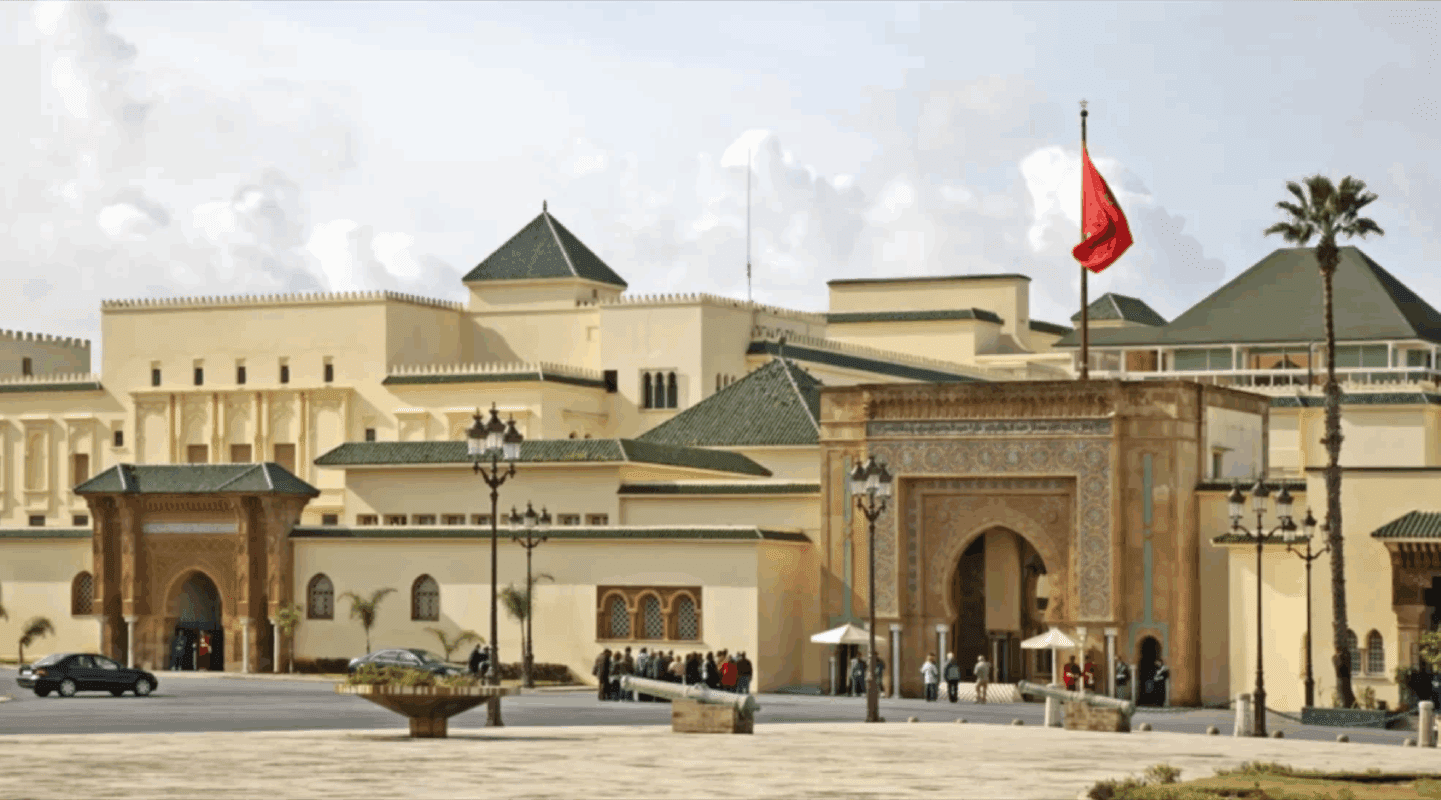
Though visitors cannot enter this sanctuary adjoining the palace, even a glimpse through the wrought-iron gates reveals the pinnacle of Moroccan royal horticulture. The vignettes visible through the barriers compose a visual symphony: twelve water channels symbolizing the celestial rivers described in the Quran, mosaic pathways forming Berber geometric codes, while rare blue-leafed willows and golden acacias sway behind the walls.
These gardens constitute living cultural heritage:
Each cedar’s planting corresponds to celestial alignment
Four independent irrigation systems adapt to seasonal changes
Nightingales and peacocks jointly guard the rose maze
When sunset gilds the domes and jasmine fragrance spills beyond the walls, these gates separating the mundane from the sacred become frames igniting boundless imagination—transforming every passerby into poets collecting royal mysteries with their gaze.
Essaouira
● Otello Gardens
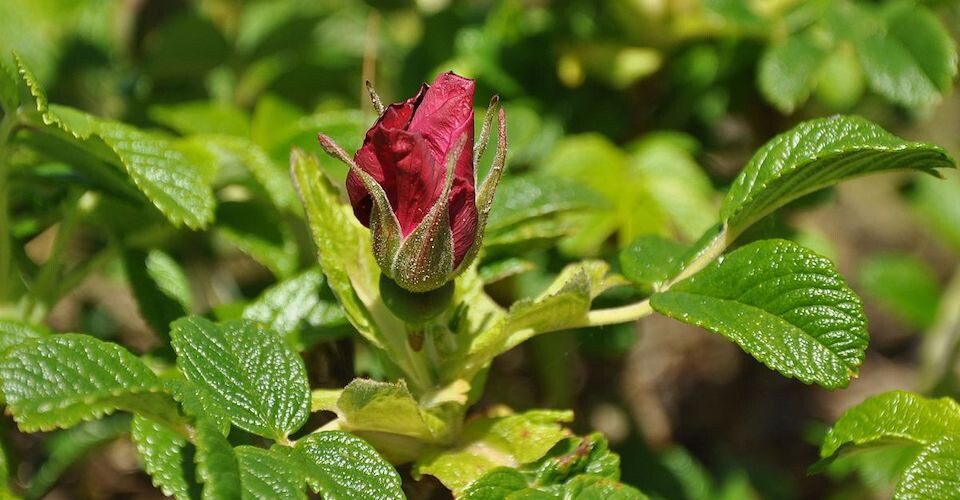
These natural enclaves nestled along the coast perfectly embody the Moroccan wisdom of “finding tranquility within vibrancy.” When Atlantic tides harmonize with garden birdsongs, when cumin-scented breezes from restaurant terraces meet the ocean’s salt-kissed air, you’ll find yourself in a wondrous space of multisensory resonance:
Visual Symphony: Setting sun projects palm shadows onto traditional zellij pathways, composing dynamic canvases with distant sailboat silhouettes
Gustatory Voyage: Sip mint tea accompanied by crashing waves, letting sea salt nuances blend with dessert’s caramel notes
Temporal Meditation: Stroll along meandering coastal paths, each step balancing on the threshold between nature and modern civilization
These meticulously designed landscapes are more than leisure spaces—they’re physical manifestations of Moroccan philosophy, reinterpreting the “externally closed, internally open” wisdom of traditional riad architecture through contemporary design language, allowing every visitor to discover their perfect equilibrium between openness and privacy, nature and culture.
Contact us for more travel information!

